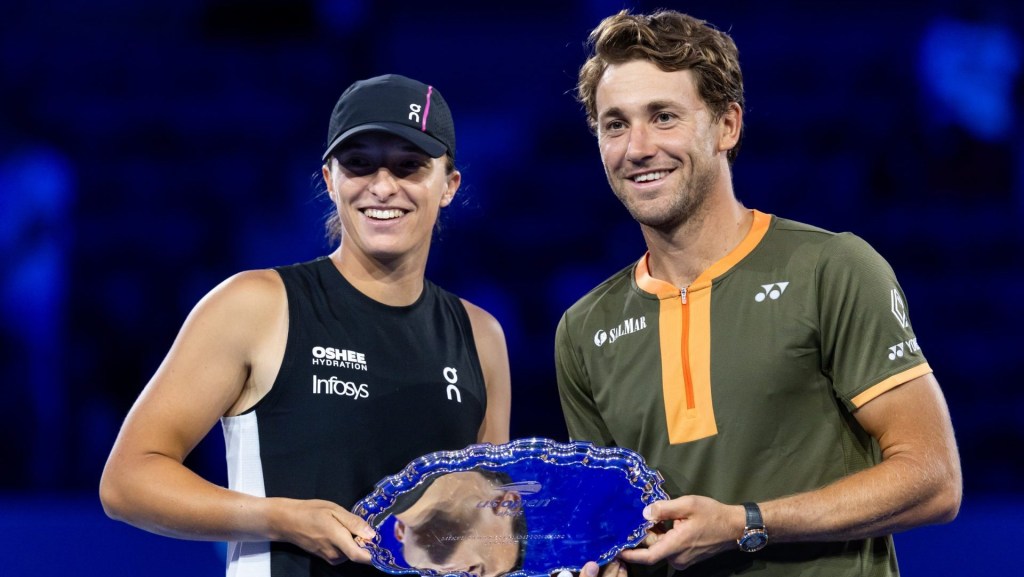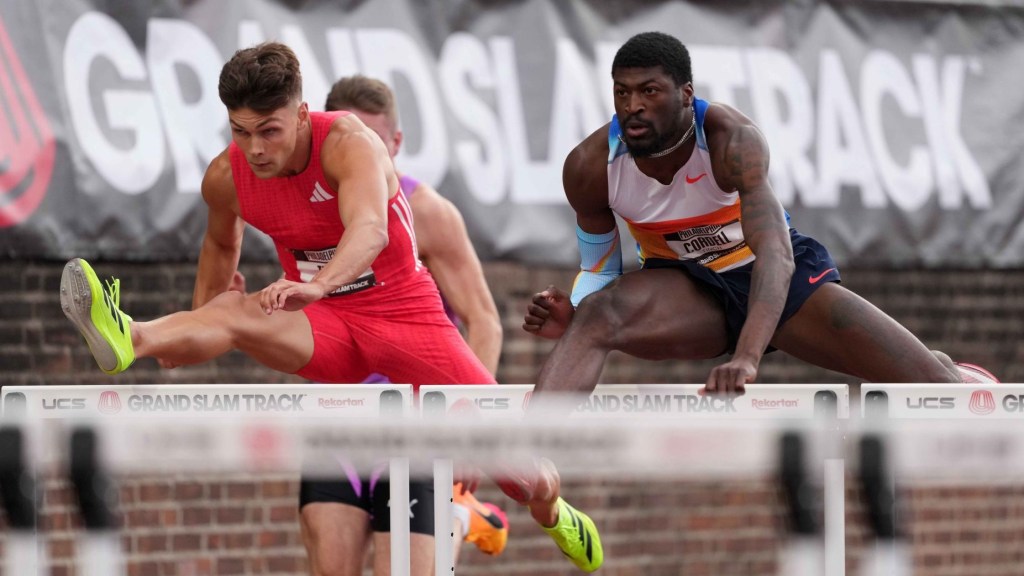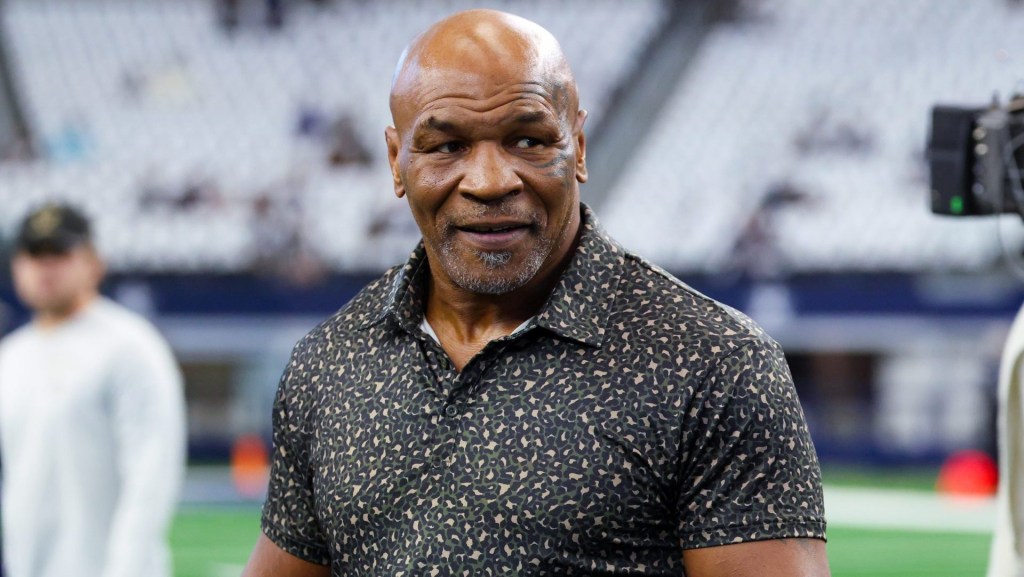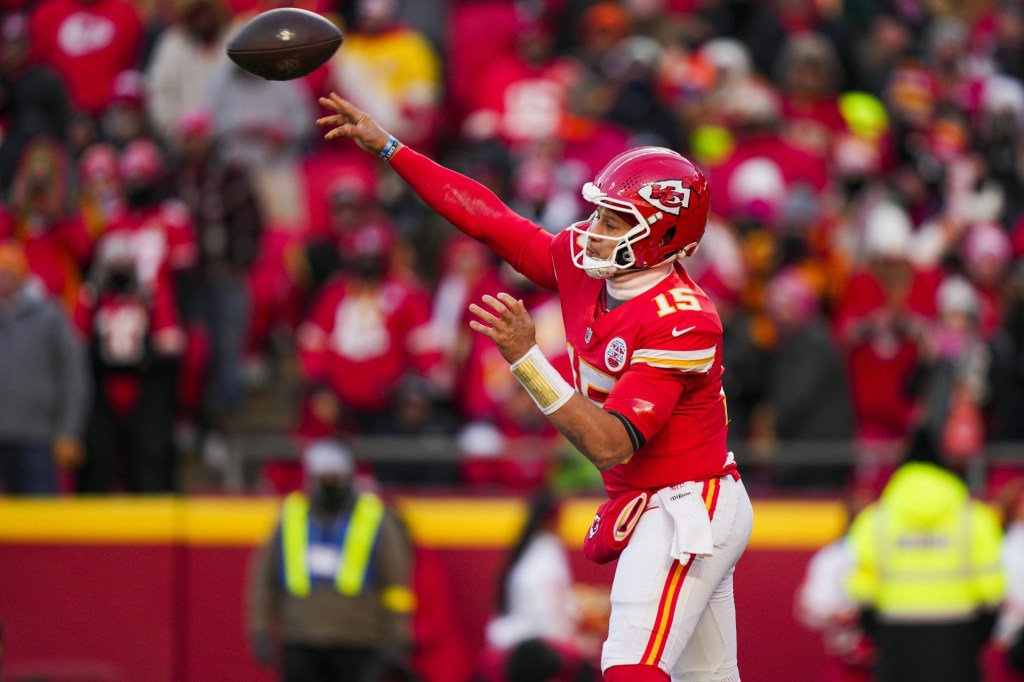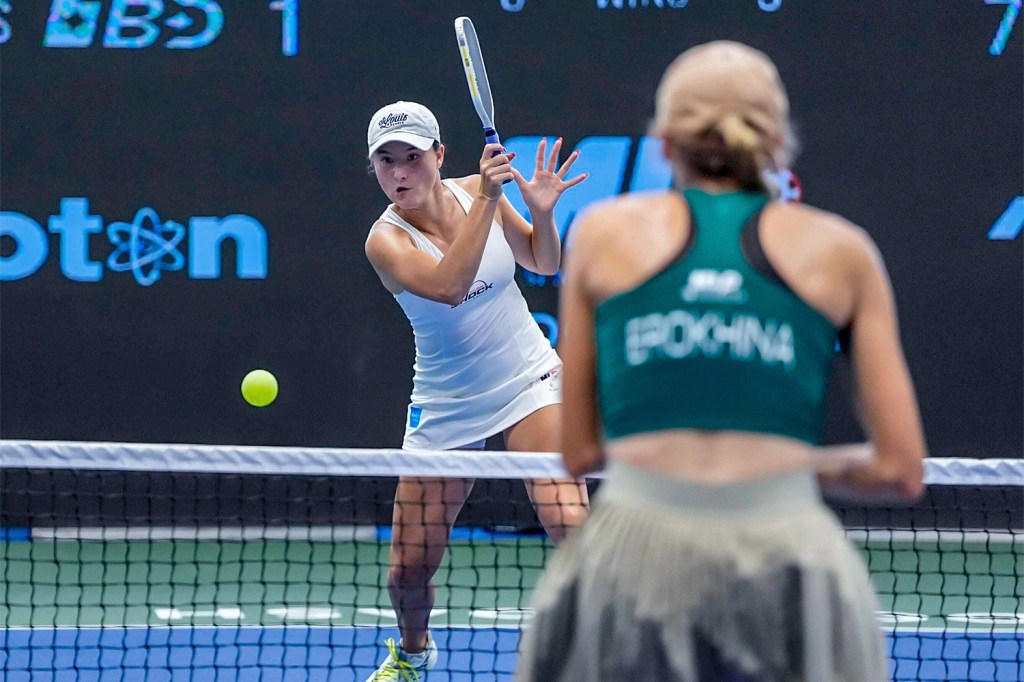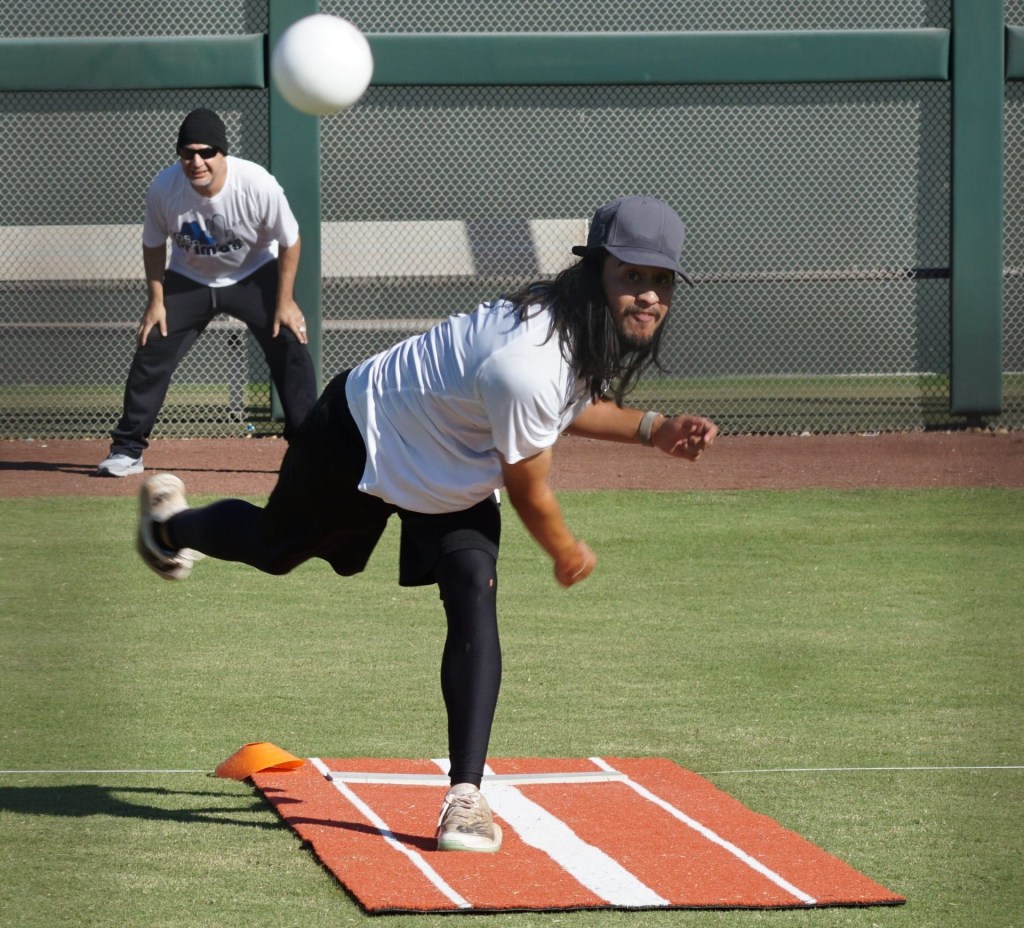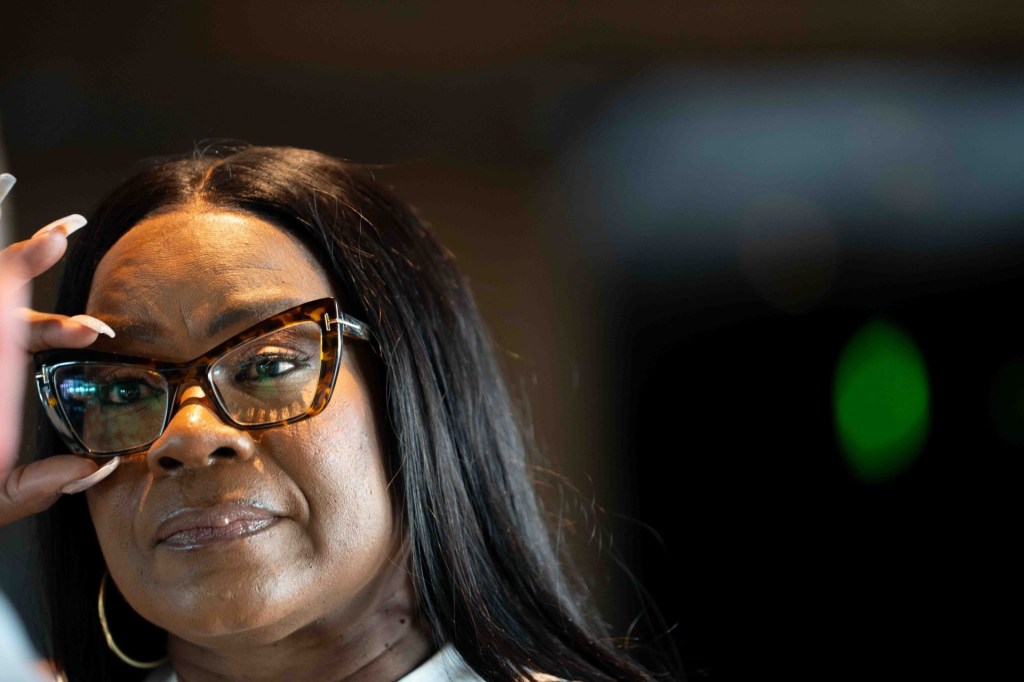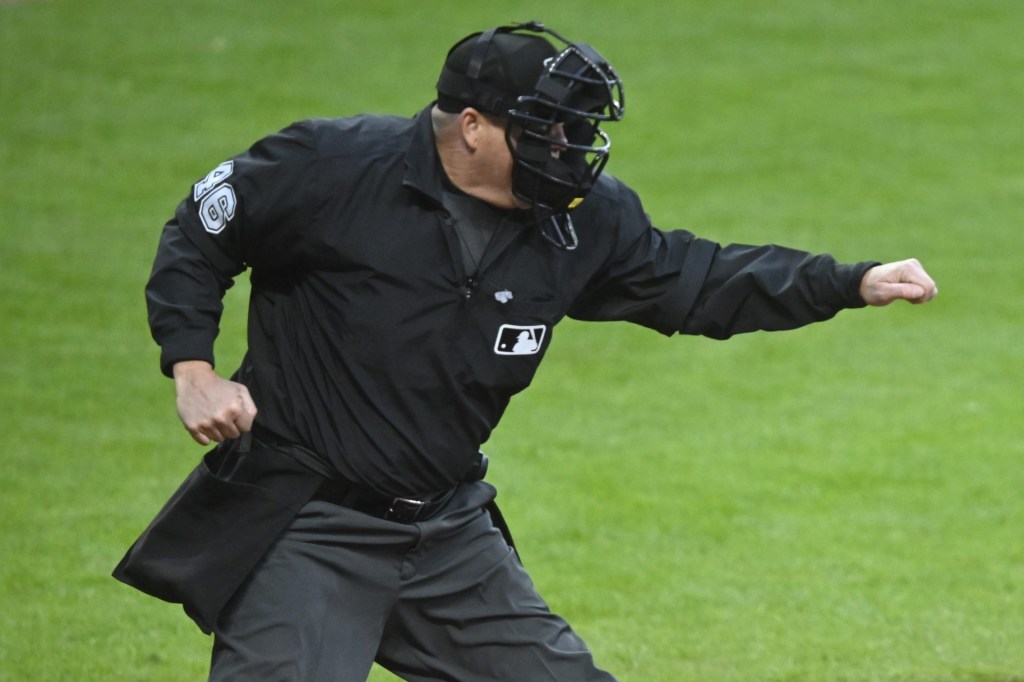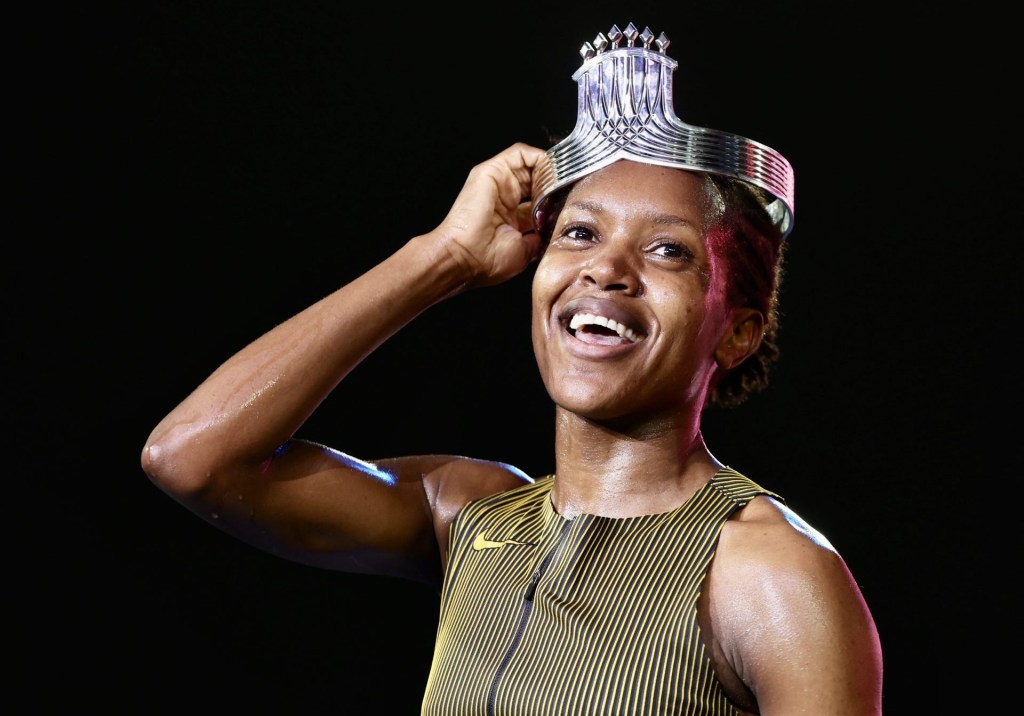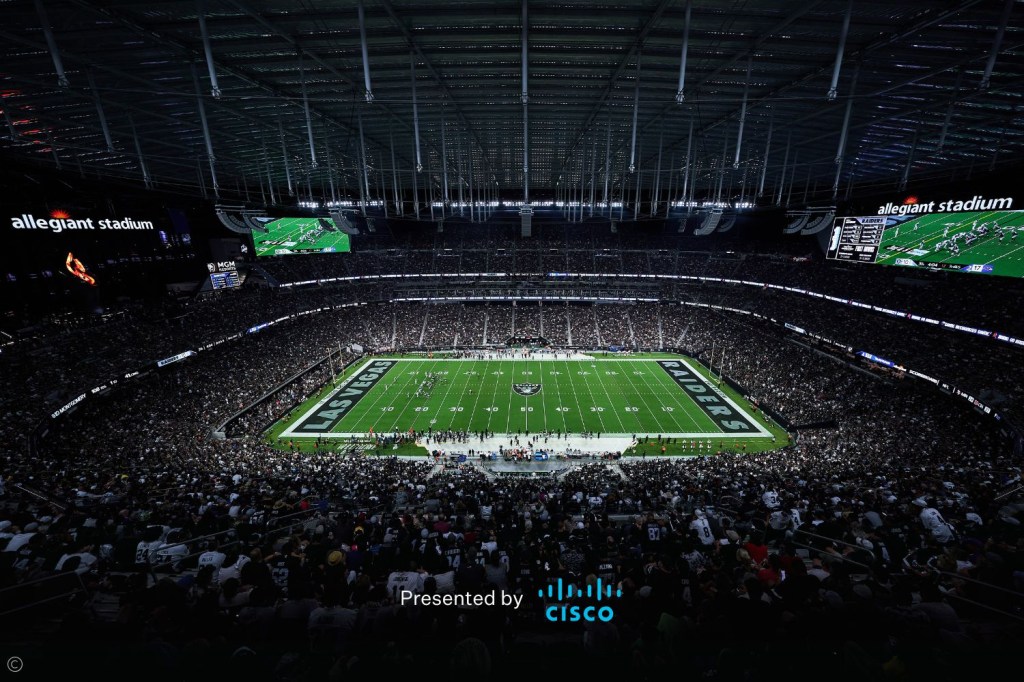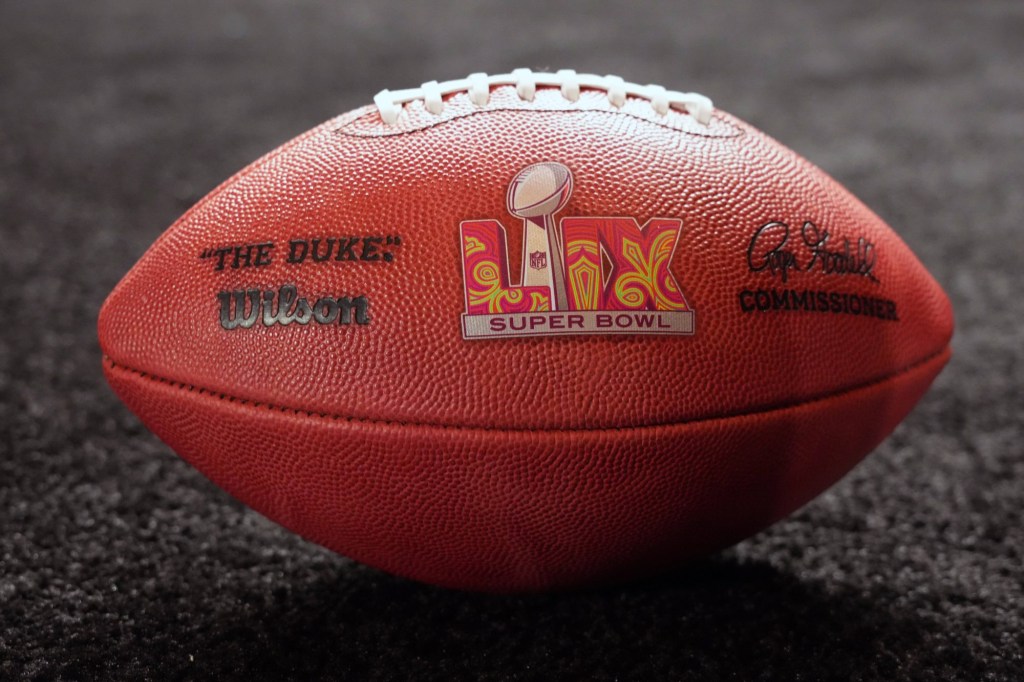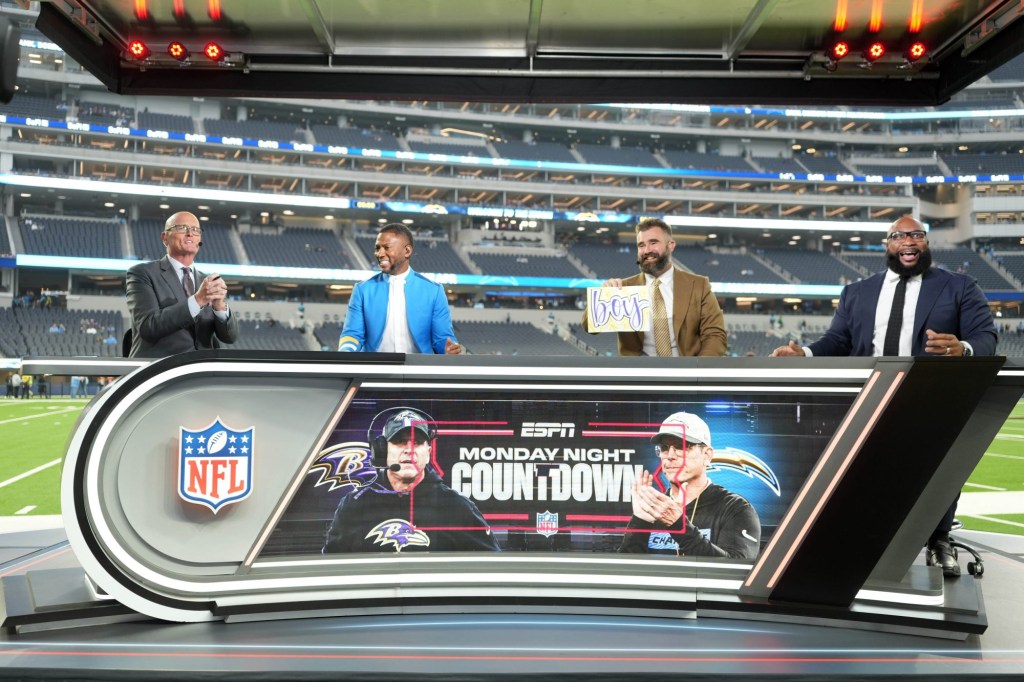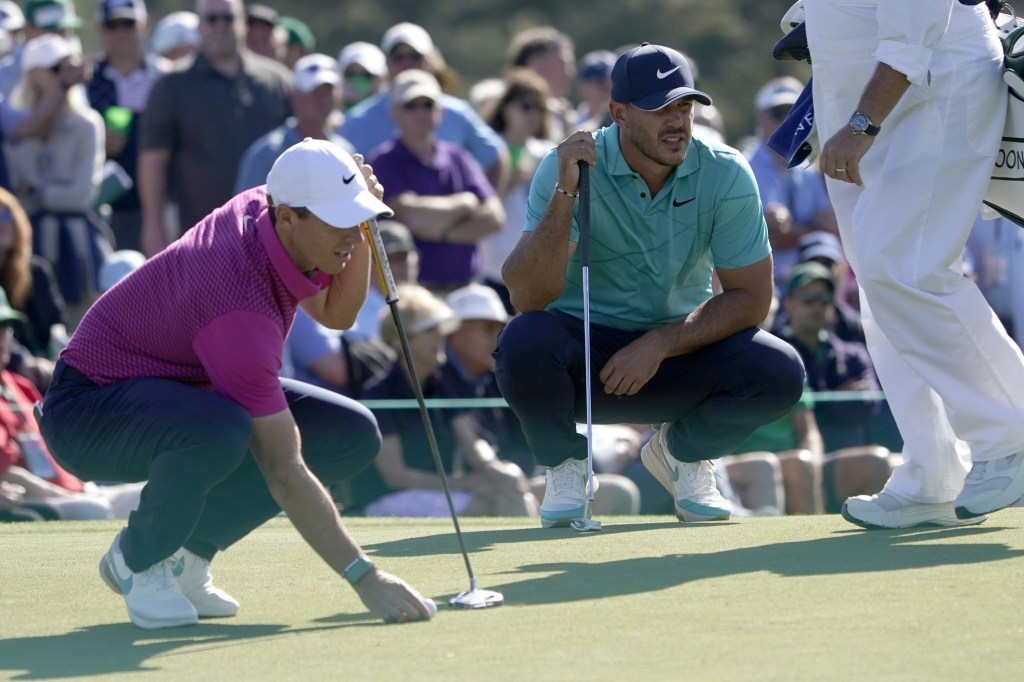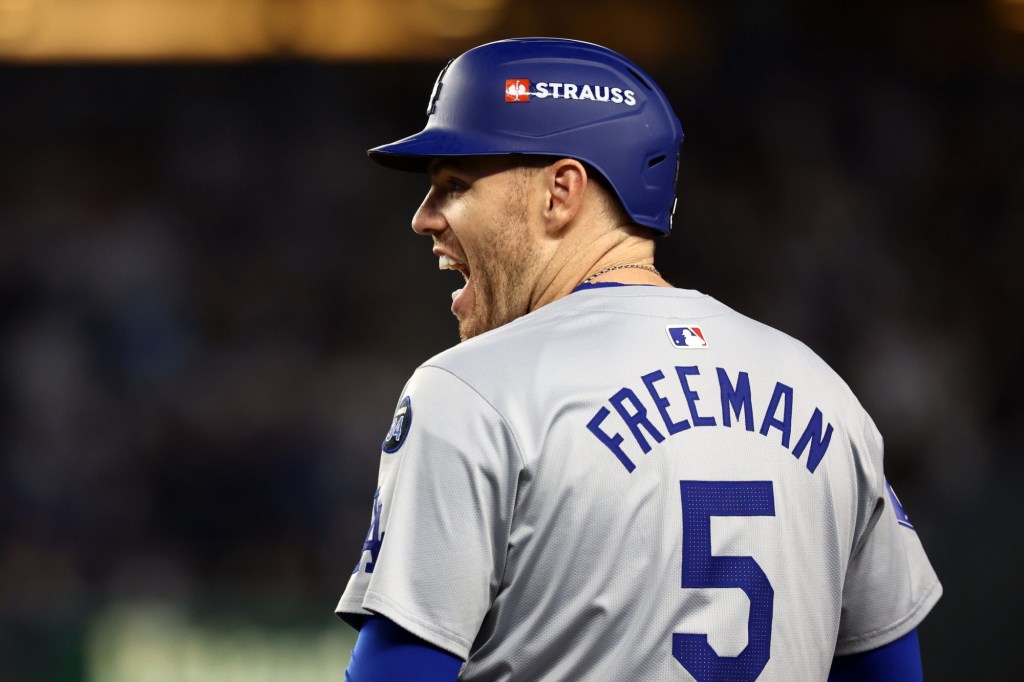When Iga Świątek and Carlos Alcaraz hoisted their trophies on the clay courts of Roland-Garros last year, they had already ditched the terry-cloth sweatbands on their wrists for Rolex watches—the gold crown logo a ubiquitous presence in the professional tennis world.
Rolex has been the official timekeeper of the French Open since 2019, when it replaced fellow Swiss watchmaker Longines and rounded out its portfolio of sponsorships of all four Grand Slam tournaments.
Now, the top matches in the world are played against a backdrop of green Rolex signage, with gilded clocks displaying the time—and the Rolex brand—from the corner of the court. And though Roger Federer, likely its best-known ambassador (or “testimonee” in Rolex parlance), retired from the pros a few years ago, the watchmaker’s roster today includes many of the sport’s highest-ranked players.
“It’s almost impossible to think about tennis without thinking about Rolex, and that comes both from the breadth of their assets and from the continuity of their investments,” Ricardo Fort, the founder of Sport by Fort Consulting and former head of global sponsorship teams at Visa and The Coca-Cola Company, tells Front Office Sports.
While Rolex’s relationship with Roland-Garros was initially focused on brand visibility and timekeeping, it has now evolved into a “strategic alliance,” says Arnaud Delaplace, partnerships director at the Fédération Française de Tennis, the governing body that organizes the tournament. “Rolex is an integral part of the Roland-Garros experience. It’s a partnership built not just on branding, but on shared values and mutual elevation.”
It’s the kind of association that most marketers dream of, especially as the luxury world increasingly sees brand-building opportunities in sports. Along with tennis, Rolex has ties to golf, yachting, motorsports, and equestrian, all of which it has cultivated over decades. The company has used feats of athleticism in its advertising since the 1920s, when swimmer Mercedes Gleitze swam the English Channel in a Rolex Oyster, which it then touted as “the wonder watch that defies the elements.” Still, it wasn’t until the 1960s that the watchmaker made a strategic pivot that would transform its identity—and set the tone for an entire industry.

According to Pierre-Yves Donzé, a professor of business history at Osaka University and the author of The Making of a Status Symbol: A Business History of Rolex, the brand began working with New York advertising agency J. Walter Thompson, which steered its client away from solely touting their watches’ technical prowess.
“There was a very long relationship between sports timing and Swiss watchmakers before Rolex. … But the objective was to advertise precision and performance,” Donzé tells FOS. Instead, the agency advised Rolex to appeal to customers’ desire for personal excellence and sense of their own potential heroism. In one well-known series of ads, images of sailing feats, icy slopes, and speeding race cars accompanied variations of the copy: “If you were here tomorrow … you’d wear a Rolex.” The brand also brought athletes further into the fold during this time, signing star golfer Arnold Palmer and pro skier Jean-Claude Killy in what would become two of its most significant long-term partnerships.
Rolex had established a groundbreaking strategy: After all, Palmer didn’t wear the watch to improve his game—in fact, he didn’t wear it on the course at all, including in Rolex ads. Rather, he appealed to consumers on a personal level as a charismatic, stylish sportsman at the top of his game. “It was because he was excellent that he embodied the values of the brand,” explains Donzé. “It’s not an instrument, Rolex; it’s an accessory to show your social status.”
The brand’s distinct identity became rooted not just in precision engineering but in a successful lifestyle. Rolex was no longer merely a watch—it was a symbol of achievement.
This, as it turned out, was a compelling draw for customers and helped catapult the brand to the top of its industry. Today, Rolex dominates its peers, accounting for more than 32% of the Swiss watch market, according to estimates by Morgan Stanley. The company has been owned by a private charitable trust since the death of its founder, Hans Wilsdorf, in 1960, and doesn’t publicly disclose sales figures. Per Morgan Stanley, though, in 2024, the brand sold more than one million timepieces, recording estimated sales of 10.6 billion Swiss francs ($12.86 billion).
Scaling an audience while maintaining the exclusivity required in luxury branding is a challenge, and tennis is one of the few sports that offers both. Until this year, Rolex was also the official timekeeper for Formula One for over a decade as the races gained more and more mainstream appeal. This season, though, the brand was replaced by watchmaker TAG Heuer as part of a 10-year, multibrand deal between F1 and the world’s largest luxury group, LVMH, reportedly worth more than $100 million per year.
“I think that it’s probably safe to say that part of the reason TAG Heuer and LVMH were very interested in that Formula 1 relationship was the fact that Rolex had had it for so long, and it clearly had paid dividends for the brand,” Brendan Cunningham, a professor of economics and the author of Selling the Crown: The Secret History of Marketing Rolex, tells FOS.
Still, the landscape of F1 has changed significantly in recent years, with new tech, crypto, and fast food sponsors entering the fray and viewership ballooning during the COVID-19 pandemic following Netflix’s docuseries Formula 1: Drive to Survive. While these are positive developments for the growth of the sport, Fort speculates Rolex may not have signed on if the opportunity were presented today.
TAG Heuer, meanwhile, has a legacy in motorsports (it was the first brand to sponsor a team in 1971) and a more approachable price point than its predecessor (around $1,500 for an entry-level watch compared with upward of $6,500 for a Rolex). As part of the partnership, the LVMH-owned brand will be the first title sponsor of the Monaco Grand Prix this month, giving it a substantial boost in international visibility.
Whether the TAG name will eventually be synonymous with F1 remains to be seen, but there is an established playbook it could follow. “Every new brand, luxury or non-luxury, that is interested in using sports to differentiate itself and be more attractive to its consumers can learn from Rolex,” says Fort, pointing also to Heineken’s relationship with F1, which includes three Grand Prix title sponsorships and a partnership with world champion Max Verstappen, and Coca-Cola’s with soccer, which spans grassroots programs, major tournaments, and more than 100 professional clubs, teams, and federations globally.
Of course, very few brands have the resources to commit to a sport so holistically—never mind compete with Rolex and LVMH where they have already staked a claim—but smaller luxury brands have found creative avenues.
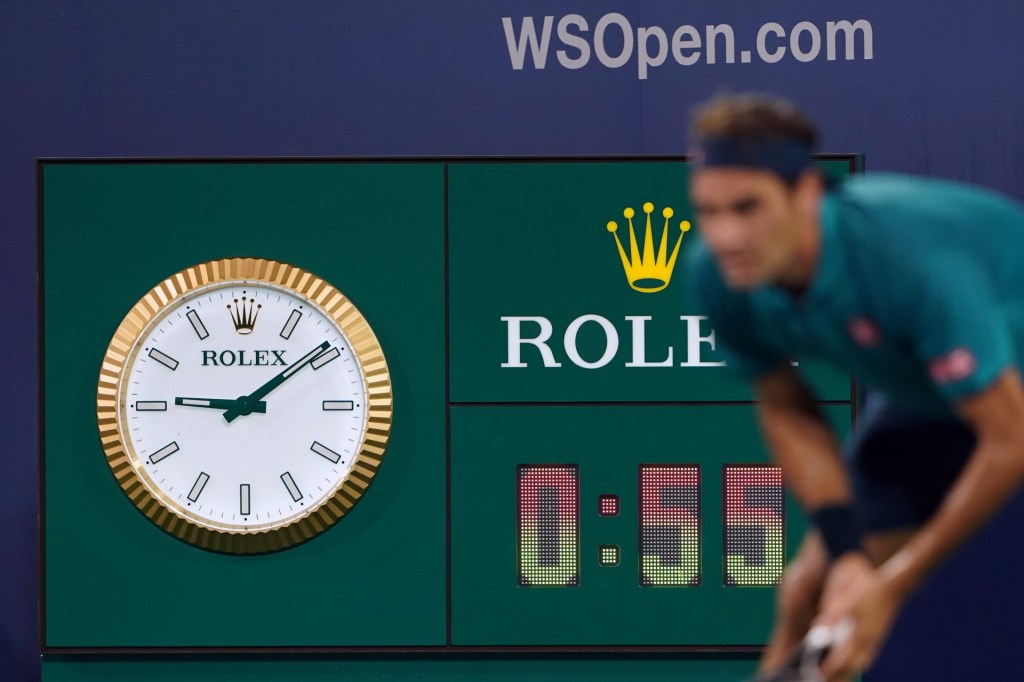
Cunningham notes Rolex typically sticks to individual sports, in which “it’s more possible for a personality to pop out and be connected with the brand.” This has left a gap in team sports—one that Swiss watchmaker Breitling moved into in 2024 with the launch of an official NFL collection spanning all 32 teams in the league. The limited run of watches retailed for $9,200 each, and according to watch outlet Hodinkee, it may have been only the beginning of a larger partnership with the league, giving Breitling a valuable platform in the American market.
For brands, sponsorships are shortcuts to awareness, credibility, and storytelling, says Fort. Nowhere is its storytelling power clearer than in Rolex’s just-launched documentary series chronicling the triumphs and perseverance of various members of the “Rolex Family,” including tennis stars Coco Gauff—whose video has racked up more than six million views in a few days—and Carlos Alcaraz. The series leverages archival and contemporary footage and intimate interviews not just to market watches, but also to create a narrative around excellence on and off the court.
At Roland-Garros, the brand’s mythos adds a sense of gravitas to the tournament’s wins and losses.
“Rolex brings something deeply emotional and symbolic to Roland-Garros. Its presence creates an atmosphere—a quiet but powerful signature that gives the tournament a sense of timelessness,” says Delaplace.

